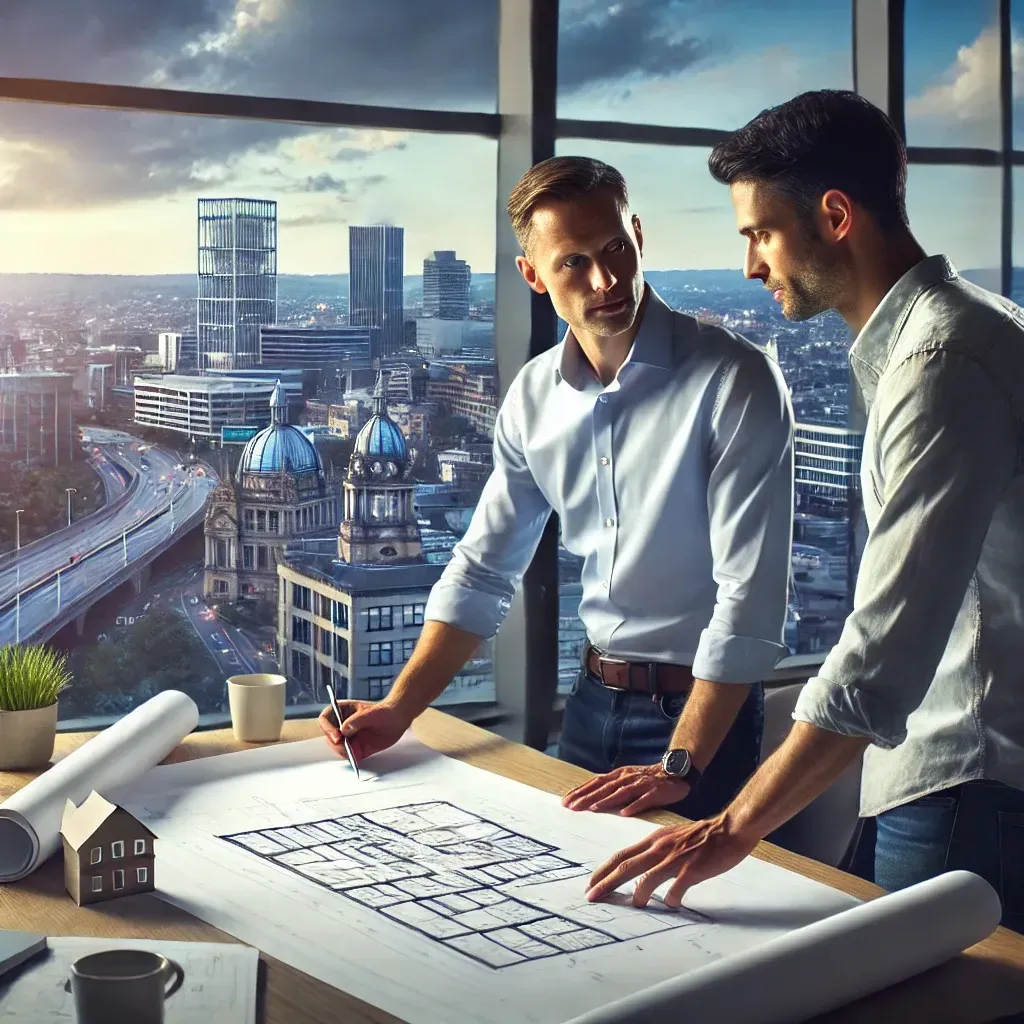Sustainable Architecture in Leeds: Building Eco-Friendly Homes for 2025 and Beyond
As the global focus intensifies on environmental sustainability, Leeds is emerging as a beacon of eco-friendly architectural innovation. With initiatives like the Climate Innovation District and pioneering projects such as the Greenhouse in Beeston, the city is at the forefront of sustainable urban development. At Architecture365, we are dedicated to contributing to this green transformation, offering expertise in designing homes that are both environmentally responsible and tailored to the unique character of Leeds.

Understanding Sustainable Architecture
Sustainable architecture is more than a trend; it's a commitment to designing and constructing buildings that minimize environmental impact, enhance energy efficiency, and promote the well-being of occupants. Key principles include:
Energy Efficiency: Utilizing design strategies and technologies that reduce energy consumption.
Resource Conservation: Employing materials and methods that preserve natural resources.
Healthy Living Environments: Ensuring indoor spaces support the health and comfort of residents.
In Leeds, these principles are being actualized through various projects and policies aimed at creating a sustainable urban fabric.
The Leeds Standard: A Commitment to Quality and Sustainability
Leeds City Council has implemented the Leeds Standard, a quality specification that emphasizes energy efficiency, space standards, and sustainability in new housing developments. This initiative ensures that new homes are designed to high environmental standards, contributing to the city's broader goals of reducing carbon emissions and promoting sustainable living. Leeds School of Earth and Environment
The Climate Innovation District: A Model for Sustainable Urban Living
The Climate Innovation District in Leeds exemplifies the city's commitment to sustainable development. This project transforms a former industrial area into a vibrant, low-carbon neighborhood featuring:Architectural Digest+1Wikipedia+1
Energy-Efficient Homes: Residences designed to minimize energy use and carbon footprint.Better Homes & Gardens
Green Infrastructure: Incorporation of green spaces, sustainable drainage systems, and biodiversity enhancements.
Community Engagement: Designs that foster community interaction and sustainable lifestyles.
Such developments serve as blueprints for future sustainable urban planning in Leeds and beyond.
The Greenhouse: A Pioneer in Eco-Friendly Living
The Greenhouse in Beeston stands as a testament to innovative sustainable architecture. This mixed-use development incorporates features such as:
Renewable Energy Systems: Utilization of solar panels and ground-source heat pumps.
Water Conservation: Rainwater harvesting and greywater recycling systems.World Green Building Council
Sustainable Materials: Use of recycled and low-impact building materials.
The Greenhouse not only reduces environmental impact but also promotes a healthy and connected community.
Designing Your Eco-Friendly Home in Leeds
At Architecture365, we guide clients through the process of creating sustainable homes that align with Leeds' environmental goals. Key considerations include:
1. Site Selection and Orientation
Choosing a site and orienting the building to maximize natural light and ventilation reduces reliance on artificial lighting and mechanical heating/cooling.
2. Energy-Efficient Design
Incorporating high-performance insulation, energy-efficient windows, and airtight construction minimizes energy loss.
3. Renewable Energy Integration
Installing solar panels or other renewable energy systems reduces dependence on fossil fuels and lowers utility costs.
4. Sustainable Materials
Selecting materials with low environmental impact, such as reclaimed wood or recycled metal, contributes to resource conservation.
5. Water Conservation
Implementing low-flow fixtures and rainwater harvesting systems conserves water and reduces strain on municipal systems.
6. Smart Home Technologies
Integrating smart systems for lighting, heating, and appliances enhances energy efficiency and provides greater control over resource use.
Embracing Biophilic Design
Biophilic design, which seeks to connect occupants with nature, is gaining prominence in sustainable architecture. Incorporating elements such as natural materials, indoor plants, and views of green spaces can enhance well-being and reduce stress.
The Role of Certifications
Pursuing certifications like LEED (Leadership in Energy and Environmental Design) provides a framework for achieving high sustainability standards. LEED-certified homes are recognized for their energy efficiency, water conservation, and healthy indoor environments. Department of Energy
Conclusion
Sustainable architecture is not just an environmental imperative but also an opportunity to create healthier, more comfortable, and cost-effective homes. Leeds' commitment to sustainability, exemplified by initiatives like the Leeds Standard and developments such as the Climate Innovation District and the Greenhouse, provides a supportive environment for eco-friendly building. At Architecture365, we are proud to be part of this movement, helping clients design and build homes that are in harmony with both the environment and the vibrant community of Leeds.Leeds School of Earth and Environment
For more information or to schedule a consultation, visit Architecture365.
